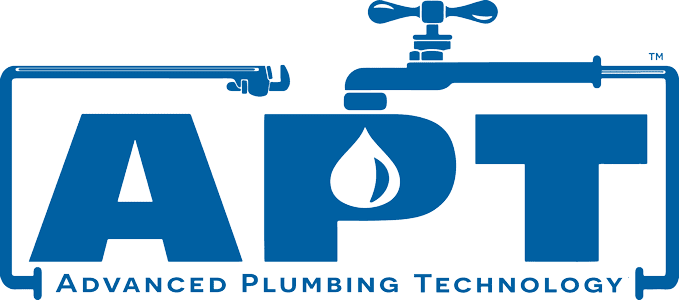Unveiling the Mysteries of Plumbing: A Comprehensive Guide
September 26th, 2023Posted by Brian Shoemaker
Introduction
Plumbing is an essential yet often overlooked aspect of modern living. We turn on the faucet and water flows, flush the toilet and waste disappears – all thanks to the intricate plumbing systems in our homes and buildings. But have you ever stopped to wonder about the hidden world of pipes, valves, and drains that make all of this possible? In this comprehensive guide, we’ll dive deep into the world of plumbing, unveiling its mysteries and shedding light on how this complex system works seamlessly to provide us with clean water and efficient waste management.
The Anatomy of Plumbing Systems:
Water Supply: The journey of clean water begins from the main water supply line, usually connected to a municipal water source. The pressure in this supply line allows water to travel through pipes and reach our homes. From here, it’s crucial to have a series of shut-off valves that can control the flow of water in case of emergencies or repairs.
Piping: Different types of pipes are used in plumbing, each serving a specific purpose. Common materials include copper, PEX (cross-linked polyethylene), PVC (polyvinyl chloride), and galvanized steel. These pipes are carefully laid out to carry both cold and hot water to various fixtures in your home, such as sinks, showers, and appliances like washing machines and dishwashers.
Fixtures and Faucets: Plumbing fixtures are where we directly interact with the water system. Sinks, bathtubs, showers, and toilets are all examples of fixtures. Faucets, which control the flow of water, come in various styles and types, including compression faucets, ball faucets, cartridge faucets, and disk faucets.
Drainage and Ventilation: Once water has been used, it needs to be drained away safely. Drainage pipes lead to the sewer or septic system. Ventilation pipes are equally important as they allow air to flow into the drainage system, preventing airlocks and maintaining proper water flow. This prevents nasty odors from escaping into your living spaces.
How Plumbing Works:
Water Pressure: Water pressure is the force that pushes water through the pipes and into our homes. It’s regulated by the municipal water supply and can be adjusted using pressure-reducing valves. Proper water pressure ensures consistent flow from faucets and fixtures.
Gravity and Drainage: Gravity plays a significant role in plumbing. Waste water flows downward due to gravity, which is why drainage pipes are angled to facilitate the movement of waste and water away from fixtures. The slope of these pipes is carefully calculated to maintain optimal flow.
Traps and Prevention of Backflow: Ever wondered why there’s a U-shaped bend (known as a trap) beneath your sinks? Traps are designed to create a water seal that prevents sewer gases from entering your home. Additionally, devices like backflow preventers ensure that water flows in only one direction, preventing contaminated water from flowing back into the clean water supply.
Hot Water Heaters: Hot water heaters, whether tankless or with storage tanks, play a crucial role in providing warm water for bathing, cooking, and cleaning. Cold water enters the heater, gets heated, and is then distributed through the hot water pipes.
Common Plumbing Issues and Solutions:
Leaks: Leaky pipes, faucets, and fixtures can lead to water wastage and potential damage. Regularly inspect your plumbing for any signs of leaks and address them promptly. Tightening fittings, replacing washers, or even replacing sections of pipe might be necessary.
Clogs: Clogs are often caused by a buildup of debris, hair, grease, or other substances in drainage pipes. A plunger or plumbing snake can help clear minor clogs. Preventing clogs is key – use drain strainers and avoid disposing of items that can easily block pipes.
Low Water Pressure: Low water pressure can be frustrating, and it’s often caused by mineral buildup in pipes or fixtures. Cleaning or replacing clogged aerators and showerheads can improve water flow. In some cases, the main water supply valve might need adjustment.
Running Toilets: A running toilet not only wastes water but can also indicate a faulty internal mechanism. The flapper, float, or valve might need adjustment or replacement. Regular maintenance can prevent such issues.
Eco-Friendly Plumbing Practices:
Water Conservation: Conserving water not only benefits the environment but also reduces your utility bills. Fix any leaks promptly, install low-flow fixtures, and consider capturing rainwater for non-potable uses like watering plants.
Energy Efficiency: Heating water accounts for a significant portion of energy usage. Insulating hot water pipes, using energy-efficient water heaters, and being mindful of hot water consumption can make a difference.
Proper Waste Disposal: Be mindful of what you flush down the toilet or pour down the drain. Harmful chemicals and non-biodegradable items can disrupt the plumbing system and harm the environment.
DIY vs. Professional Plumbing:
While some plumbing tasks can be tackled as DIY projects, such as fixing a minor leak or installing a new faucet, more complex issues require the expertise of a professional plumber. Attempting complex repairs without the necessary knowledge can lead to further damage and expenses.
Conclusion:
Plumbing is undoubtedly a fascinating and essential part of our everyday lives. By understanding its fundamental components, workings, and common issues, you can better appreciate the conveniences it provides. Remember, regular maintenance and responsible practices go a long way in keeping your plumbing system efficient, eco-friendly, and problem-free. So, the next time you turn on the tap or flush the toilet, you’ll have a deeper appreciation for the intricate system that makes it all possible.
